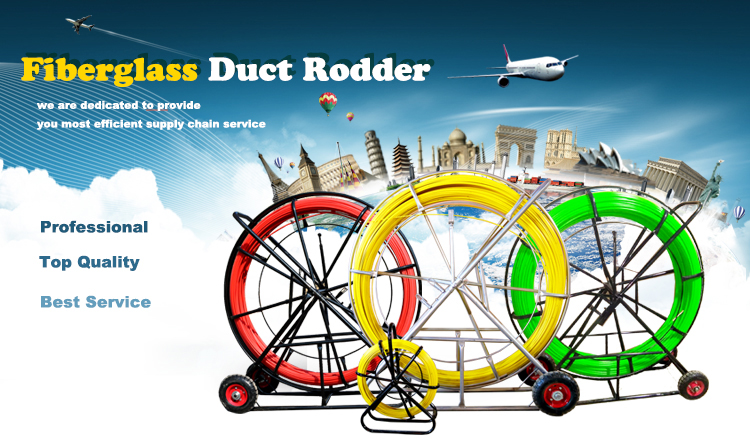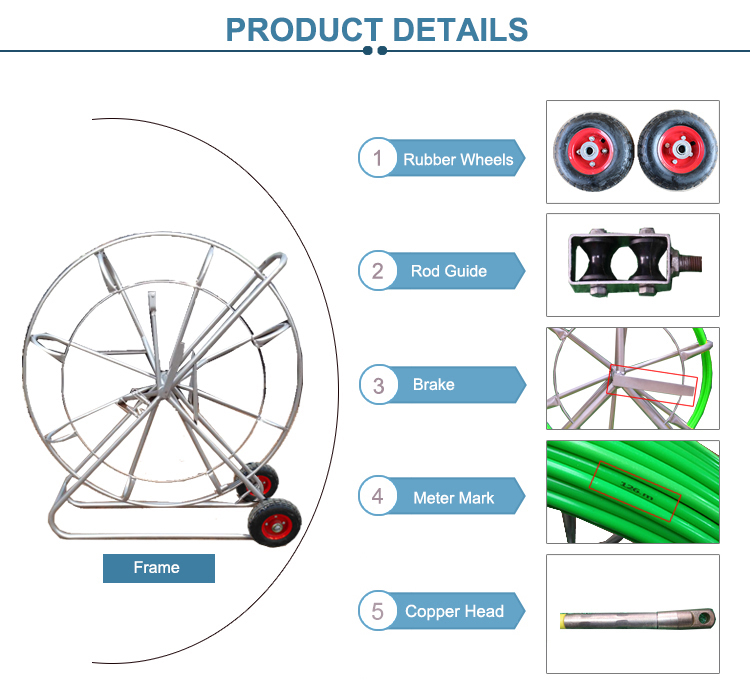Fiberglass Duct Rodder or push rodder and commonly called python rod by its nature passing through under ground ducts by ups,down negotiating the duct curvature thus very convinient to pull the cables,wires inside the duct,also it can be used to locate the duct block or damage portion identifications.Its has high safety aspects to use underground applicartions because of its non conductivity of electricity,sets a major safety to site workers.
It has been built with rigid sturdy steel tubular fabrication for easy usage at site and can be self coiled in the tubular frame and easily roll like trolley on ground by its wheels fitted at bottom.

Specifications of duct rodder:
Specification
Rod Diameter
(mm)
4-16mm
Rod Length
(m)
15-500m
Color
blue,yellow,red,white,etc
Material
Rod Inner
extruded by fiberglass and high strength resin at high temperature
Rod Outer
high density polyethylene coating
Iron Frame
steel with high-temperature sprayed plastic or spray coating
Wheel
rubber
Brake
yes
Drawing Head
copper
Physical Characters
Technology
pultrusion
Work Situation Temperature
-40°C to +80°C
Tensile Modulus
>30000MPA
Package
Inside
plastic woven strip wind around the frame
Outside
carton box and wooden box

Fiberglass Duct Rodder
Fiberglass Duct Rodder,Fiberglass Duct Rod,Yellow Fiberglass Duct Rodder,Portable Fiberglass Duct Rodder,Duct Rodder
Hebei Long Zhuo Trade Co., Ltd. , https://www.hblongzhuo.com
![<?echo $_SERVER['SERVER_NAME'];?>](/template/twentyseventeen/skin/images/header.jpg)